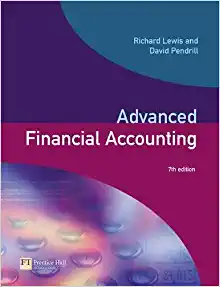Question
1. Suppose you own a farm that, if run eciently, can produce corn according to the following transformation formula: W1 = 400qI0 where I0 is
1. Suppose you own a farm that, if run eciently, can produce corn according to the following "transformation" formula: W1 = 400qI0 where I0 is the number of bushels of corn planted in date 0, and W1 is the number of bushels turned over to you in date 1, net after all payments to labor and other hired inputs.
Your utility function of consumption at date 0 and consumption at date 1 is:
U(C0,C1) = min(C0,C1)
(a) If 50,000 bushels of corn are planted, what will be the net output of corn at date 1?
(b) If you set a target for output of 100,000 bushels, what is the minimum number of bushels that must be planted?
(c) Suppose capital markets do not exist, and you can neither borrow, lend, or store any corn at the beginning of date 0. If you have 22,500 bushels of corn at date 0, what will your production plan be? Your consumption plan? What will be the average rate of return on investment of corn? What will be the rate of return on the marginal investment?
(d) If 22,500 bushels are planted, what will be the average rate of return on the investment? What will be the rate of return on the marginal investment? (e) If a capital market exists, and the rate of interest is 331 3%, what will be your optimal investment? (f) If you have no corn at date 0 and date 1, a capital market exists (331 3% rate of interest), and you invest optimally, what is your equity in the venture? What will be your optimal consumption plan? Outline your sources and uses of funds for date 0 and date 1.
(g) If a capital market exists, will you loan your farm for a period for 23,100 bushels of corn? Why? If you have no corn at date 0 and date 1, and you decide to loan the farm, what will be your consumption plan?
1
2. Your life span is two periods. You are endowed with $500 today. You have a production technology which can transform an investment of $I today into $40I next year. Also, you can borrow at 331 3% per annum and lend at 25% per annum. (a) What is the maximum feasible consumption today? (b) What is the maximum feasible consumption next year? (c) What is the optimal consumption if U(C0,C1) = min(C0,C1)? (d) What is the "Fisher Separation Theorem?" Is it valid under the assumption of dierent borrowing and lending rates?
3. Present Value Examples (a) Someone oers you a security which pays $n at the end of the nth year until forever (i.e., it pays $1 at the end of the rst year, $2 at the end of the second year, and so on). If the annually compounded interest rate is 10% per year, what is the fair price of such security? (Hint: Let
S =
1 1 + r
+
2 (1 + r)2
+
3 (1 + r)3
+ (1) Multiply (1) by 1 + r and then subtract one from the other.) (b) (Rule of 69) People in the banks have a quick way of nding out how long it takes to double your money. The trick is to divide 69 by the continuously compounded interest rate (in percentage). For example, if the continuously compounded interest rate is 10% per year, then you know it takes 69/10 = 6.9 years to double your money. Why 69? Can you gure out a similar rule to nd out the number of years it takes to triple your money?
4. You went shopping a month ago, racking charges of $2,000 to your credit card along the way. Then the credit card statement comes, and it says your minimum monthly payment is only $40. Suppose you only pay the minimum payment of $40 every month. If the stated interest rate is 24%/year, compounded monthly, how long does it take for you to pay o your credit card debt? For simplicity, assume the rst payment is due immediately, and your credit card company starts charging you interest after the rst day of the rst payment.
5. You obtain a $200,000 mortgage loan from TD bank to buy a house. The mortgage has a 5-year xed rate of 5%/year (using Canadian mortgage convention), and the amortization period of the mortgage is 20 years. (a) What is the monthly mortgage payment? (b) How much do you owe the bank after the 60th monthly payment? (c) For the 24th monthly payment, how much of it is for interest, and how much of it is for principal repayment? (d) What is the present value of the interest portion of the rst 60 payments?
Step by Step Solution
There are 3 Steps involved in it
Step: 1

Get Instant Access to Expert-Tailored Solutions
See step-by-step solutions with expert insights and AI powered tools for academic success
Step: 2

Step: 3

Ace Your Homework with AI
Get the answers you need in no time with our AI-driven, step-by-step assistance
Get Started


